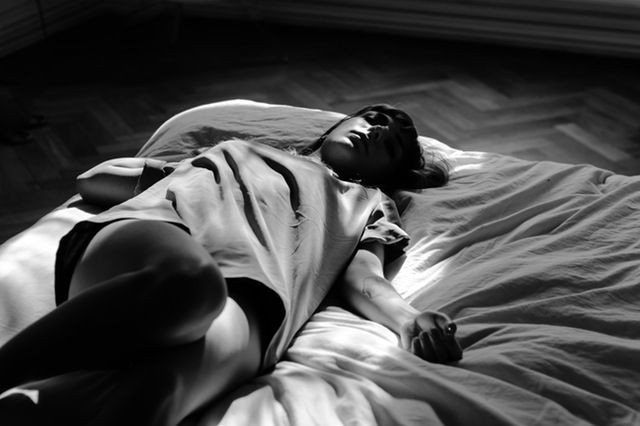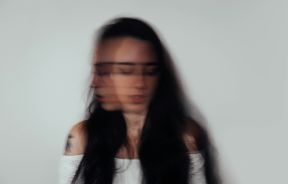Sleep Paralysis Movie 'Dead Awake' Reveals Real-Life Horror Of Having A Frozen Body But Awake Brain

You wake up in the middle of the night frightened by the sense that something weird is in the bedroom. You try to lift yourself up, but you can't feel your arms or legs. Your breathing starts to get heavy as a feeling of fear overcomes you — it's almost as if you're dead awake. This real-life horror is known as sleep paralysis.
In the upcoming supernatural horror film Dead Awake, Final Destination creator Jeffrey Reddick brings to life the terrifying affliction of sleep paralysis, known as the temporary inability to move or speak when you're waking up or falling asleep, according to the Mayo Clinic.
The sleep disorder occurs more often while waking up than while falling asleep, but it always occurs when you're awake. Episodes are usually brief — lasting a few seconds or minutes. When a sufferer is finally "released" from the paralysis and can move, they may feel exhausted.
So, why do you feel paralyzed?
During sleep, your muscles are paralyzed, but you never realize it because you're asleep. For example, in rapid eye movement (REM) sleep, which occurs in cycles of about 90 to 120 minutes, the body dreams and the eyes move around underneath the eyelids, but the rest of the body is "frozen." A 2012 study in The Journal of Neuroscience found two neurotransmitters — gamma-aminobutyric acid (GABA) and glycine — work together to paralyze skeletal muscles during REM sleep by “switching off” motor activity.
People who experience sleep paralysis struggle to breathe properly, which can feel like suffocation, because rapid and irregular breathing occurs in REM sleep. If you’re going through an episode, you’re awake, or half awake, are are aware that you cannot move.
Aside from muscle atonia, you can also have the experience of dreaming with the involvement of being conscious and aware of your surroundings. Vivid hallucinations are more common during sleep paralysis because you’re still dreaming. Hallucinatory experiences due to sleep paralysis are categorized into three groups: “Intruder” refers to sensing the presence of a person or other entity during sleep paralysis; “Incubus” refers to chest pressure, difficulty breathing, and in some cases, perception of physical pain; or “Unusual Bodily Experiences,” which include out-of-body experiences such as flying or floating in space.
What’s the difference between sleep paralysis and night terrors?
The characteristics of sleep paralysis may intertwine with night terrors by involving elements that terrify, either the person experiencing them or alternatively by those who witness someone else experiencing them. Night terrors are uncommon among adults, and typically affect children. On the other hand, sleep paralysis often begins in adolescence and continues well into adulthood, with 25 percent to 50 percent of Americans reporting sleep paralysis at least once. Night terrors occur during slow-wave sleep, which happens in the early part of the night. You’re more likely to experience sleep paralysis toward the morning, with the REM sleep into wakefulness resulting in characteristic symptoms.
Despite its terrifying nature, sleep paralysis doesn’t cause long-term physical harm and isn’t tied to the development of serious psychological disorders, but it can be unsettling.
How do I treat it?
There is no exact treatment for sleep paralysis, but adopting a regular sleeping pattern can help. A 2002 study in the journal Sleep found a dysfunctional sleep/wake cycle may be a mediating factor in sleep paralysis. Disruption of sleeping patterns can induce this state. Moreover, being diagnosed with narcolepsy can increase the risk for sleep paralysis, along with other mental health disorders such as depression and anxiety.
Simply getting enough sleep and improving your sleep environment will lessen the risk of sleep paralysis. If your sleep paralysis is troublesome, medication like antidepressants can help treat it.



























